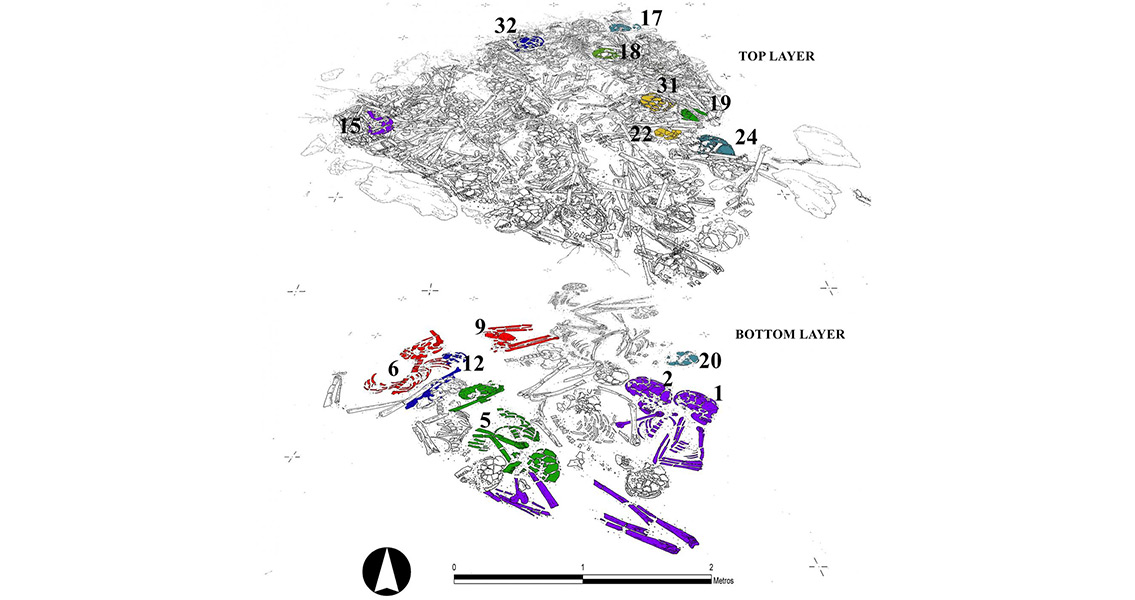<![CDATA[6,000 years ago a Neolithic people in northern Spain introduced a new burial ritual to Europe. They built megalithic tombs which were used over an extended time period as a collective burial site as well as a setting for other ritualistic acts. Megalithic tombs are burial chambers built with large slabs of stone (megaliths) laid on their edge and covered with dirt or smaller stones. Typically constructed as a chamber type tomb, the term megalithic describes structures built across the Mediterranean, Western Europe and neighboring regions, most often by farming communities during the Neolithic time period. A megalithic tomb found in Alto de Reinoso, near Burgos, Spain differs from this definition in one respect according to research: this burial chamber was constructed using wood with the stone mound built over it afterwards. Radiocarbon dating proposes the tomb was used by a community that spanned approximately three to four generations and lived somewhere between 3700 BCE and 3600 BCE. At the tomb in Alto de Reinoso archaeologists have discovered the remains of a closely related local community which lived and died approximately 6,000 years ago. Using genetics, bone analysis, isotope analysis and archaeological analysis they have identified no fewer than 47 adolescents and adults who had been buried in this single tomb over the course of 100-year period. Based on DNA findings the research suggests that the remains found in the tomb belonged to a series of families from a close-knit, local group which likely farmed cereal crops (wheat, barley, and flax for example) in addition to raising sheep and goats. Approximately half of the deceased were adults, the other half adolescents and children. The average height for the men was 159 cm (approx. 5’3”) and for the women 150 cm (slightly under 5’). The adult skeletons typically showed stress markers as well as degenerative diseases in the joints and spine in various stages, head injuries, dental disease and healed fractures. Additionally, genetic research revealed relationships, especially maternal relationships, between the individuals within the group, and there is evidence that the bodies buried close together were likely to have been closely related. All of the deceased, except for three, grew up in the area surrounding the tomb. The tomb is made up of three very distinct levels. The individuals located at the bottom level were found to be more closely related, and occasionally family members looked to have been entombed side-by-side. Above them on the second level, practically all of the skeletons showed signs of having been manipulated, i.e. missing skulls and other skeletal parts, which suggested a change in how the tomb was used. It's noted within the research that all of the extensive data collected at the site, including information pertaining to the group's health and diet, lifestyle, demographics, and mobility patterns in addition to their genetic profiles fits with the standards of sedentary farming communities of the Neolithic. Even though the authors' conclusions depend on some underlying assumptions regarding Neolithic societies, this could be the first study of its kind to offer such a detailed picture of a community in both life and death. The fact that they embraced a collective burial chamber in lieu of individual graves shows a significant shift in social identity. The study detailing the findings made at the tomb is available at the open access journal Plos One Image courtesy of Héctor Arcusa Magallón.]]>
The Neolithic Life and Megalithic Death of a Community
